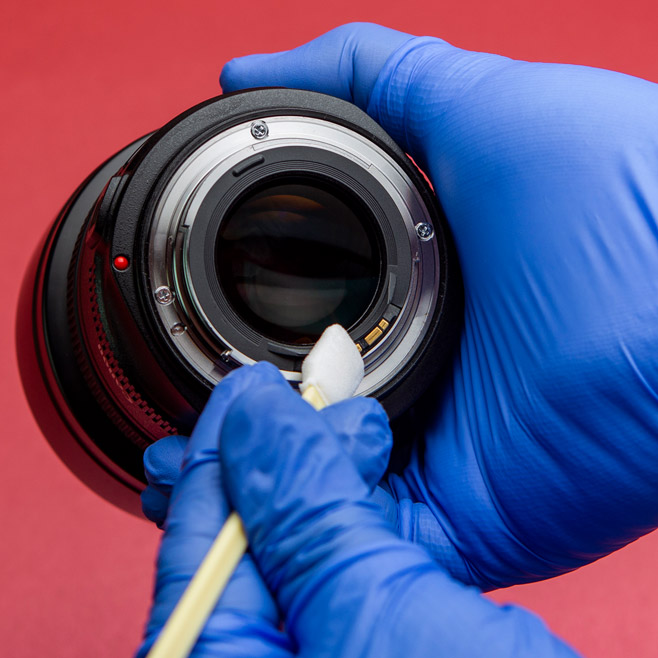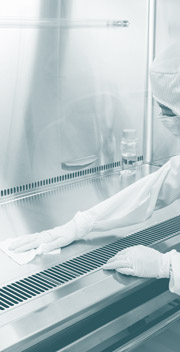Cleanroom News, FDA
Could Neuroprosthetics Offer Hope to Patients with Spinal Cord Trauma?
It has to be said: the human body is an amazing and ingenious piece of biological equipment. When it suffers an incision, it self-heals; when it is damaged, it can – at times – regenerate. And when its central command control – the brain – is impaired, it will oftentimes re-route communications via different parts of its own network. The only thing it cannot do is to forge new links between itself and the spinal system. Once damage occurs to the spinal cord, all communication with the brain ceases. And this can mean the cessation of movement too.
Until now.
In 1995, actor and popular ‘Superman’ Christopher Reeve was thrown from a horse at a competitive equestrian event in Culpeper, Virginia.(1) When his steed refused to jump an obstacle on the cross-country course, Reeve was jettisoned headfirst to the ground, breaking his first and second vertebrae, effectively severing his skull from his spine and paralyzing him from the neck down. Despite extensive surgery to reattach the head-spine connection and extensive rehabilitation, Reeve remained a quadriplegic until his death in 2004.
During his protracted rehabilitation efforts, Reeve was to become an outspoken proponent of stem cell research, believing that the replacement or transplantation of human embryonic stem cells (hESCs) might lead to a cure. To date, this treatment has not matured, but new research conducted by a coalition including Medtronic, Brown University, University of Lausanne, Motac Neuroscience, Fraunhofer ICT-IMM, and the Lausanne University hospital may finally offer a potential alternative.
In non-human primate trials, a neuroprosthetic device has successfully acted as a wireless bridge to relay signals between the brain and spine, bypassing a lesion artificially introduced into the spinal cord. In intact nervous systems, locomotive signals are issued from the motor cortex in the brain, travelling to the lumbar region via the spinal cord. Once received in the lumbar region – whether ‘naturally’ or via the bridge relay – these signals initiate movement of the leg muscles – a motion we call ‘walking.’
Sounds simple? Perhaps the most innovative ideas are. In essence, the brain-spine interface acts by decoding spiking activity in the motor cortex and relaying this data to a system of electrodes in the surface of the lumbar region. Electrical stimulation then ‘modulates distinct networks of neurons that can activate specific muscles in the legs.’(2) By understanding how to ‘extract brain signals that encode flexion and extension movements of the leg with a mathematical algorithm [and then linking these] to the specific hotspots in the spinal cord that [induce] walking,’ researchers have restored locomotion to trial subjects without the use of physical therapy or other training.(3) The ‘hotspots’ in the lumbar spine area are actually a complex network of neurons that researchers are calling the ‘spinal brain’ that automatically controls all of the fine movements – coordinated motions, proprioception, and balance – that comprise the act of walking.
And all of this is now possible in real time and wirelessly.
But before we celebrate this development as a pivotal turning point in spinal cord trauma treatment, we should reflect that the federal Food and Drug Administration (FDA) has not yet approved the technology for use with human subjects. Although David Borton, a neuroengineer at Brown University, celebrated ‘how effortlessly the animals [in the study] took to the technology,’ a significant amount of additional research needs to be done before human spinal patients may be recipients of this intervention.(4) Acknowledging the work ahead, Gregoire Courtine of the Swiss Federal Institute of Technology Lausanne remarked that “[w]e’re not going to see people walking in the street with brain-spine interfaces tomorrow.”(5)
In technological terms, part of the challenge is the amount of data generated. In the primate subjects, an implanted array of electrodes in the motor cortex transmitted approximately 40MB of data per second. And not all of that data pertained to movement: according to Borton, the 40MB/second included all data – a ‘full bandwidth’ analysis – because the team remains unsure as to which particular needles in that haystack are associated only with movement. “We don’t yet know what the most useful parts of the signal are […] We can simplify later.”(6)
And Courtine is a member of just one research cadre. Other groups – most notably one led by Professor Susan Harkema of the Kentucky Spinal Cord Injury Research Center, based at the University of Louisville, KY – are approaching the question from a different angle, using an external computer to generate signals received by the lumbar region to facilitate locomotion. Both experiments have the same goal in mind, but the Borton-Courtine team leverages biomedical technology that will be implanted within the body, becoming a part of the patient’s physical system. And as such, questions relating to long term usage, public health, FDA approval and regulation, and manufacture within a sterile environment remain.
With that all said, the hardware is one part of the experiment that’s working right out of the box. In the primate study, the pulse generator implanted in the subjects’ rib cage has already been approved for use in human tests in Switzerland and Medtronic, the creator of this generator, is a lead developer and manufacturer of biomedical devices in the US. With a mission to ‘contribute to human welfare by application of biomedical engineering in the research, design, manufacture, and sale of instruments or appliances that alleviate pain, restore health, and extend life,’ Medtronic manufactures devices such as implantable pacemakers, defibrillators or drug pumps in state of the art cleanrooms. With a device being subject to as many as 1500 inspections, contamination control is a top issue for Medtronic, even to the point that the company maintains a database of every individual who touches a device whilst in production.(7) And this level of accountability is critical. In Medtronic’s perfusion kit assembly plant in the Netherlands, for example, a 400 square meter cleanroom was more than doubled to1000 square meters when production of custom perfusion kits increased. The cleanroom – with all of its associated equipment and sterile consumables – is the nerve center of the organization, and indeed of our industry. In fact, it is the very heart that drives innovation and new product launch, products that offer patients hope of a return to a fully mobile life.
Do you have comments on the significance of cleanroom technology in the development of new bio-medical devices? We’d love to learn your thoughts!
References:
- http://www.nytimes.com/1995/06/01/us/christopher-reeve-thrown-from-horse-is-suffering-paralysis.html
- https://www.myscience.ch/news/2016/primates_regain_control_of_paralyzed_limb-2016-epfl
- ibid
- http://spectrum.ieee.org/the-human-os/biomedical/bionics/brain-and-spine-implants-let-a-paralyzed-monkey-walk-again
- ibid
- ibid
- http://www.medtronic.com/us-en/about/news/mecc-where-quality-matters.html




















Pingback: Could Neuroprosthetics Offer Hope to Patients w...
Pingback: ¿Podrían las Neuroprótesis ofrecer esperanza a los pacientes con traumatismos de la médula espinal? - Productos Para Cuartos Limpios|Berkshire Mexico